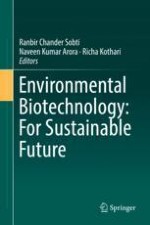2019 | OriginalPaper | Buchkapitel
11. Efficiency of Constructed Wetland Microcosms (CWMs) for the Treatment of Domestic Wastewater Using Aquatic Macrophytes
verfasst von : Saroj Kumar, Venkatesh Dutta
Erschienen in: Environmental Biotechnology: For Sustainable Future
Verlag: Springer Singapore
Aktivieren Sie unsere intelligente Suche, um passende Fachinhalte oder Patente zu finden.
Wählen Sie Textabschnitte aus um mit Künstlicher Intelligenz passenden Patente zu finden. powered by
Markieren Sie Textabschnitte, um KI-gestützt weitere passende Inhalte zu finden. powered by
